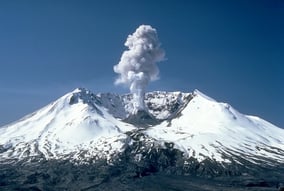Key Words you should know:
Supply chain – logistics – digital transformation – optimization – evolution – innovation
 Most product companies understand they have gaps in their supply chain data that hinder their ability to meet critical demand. One of the largest gaps lies between supply and demand planning and a company’s supplier network, making many companies hesitant to adopt supply and demand planning software within their ERP.
Most product companies understand they have gaps in their supply chain data that hinder their ability to meet critical demand. One of the largest gaps lies between supply and demand planning and a company’s supplier network, making many companies hesitant to adopt supply and demand planning software within their ERP.
How has forecasting and demand/supply planning changed over time as technology has evolved?
-
- Spreadsheet addiction – companies of every size in every industry
- Better intelligent data
- Smart automated planning tools
- Increased publicity from large enterprises filtered down to SMB
- More affordable planning tools with the augment of SaaS and the Cloud
Supplier relationships through the lens of MRP:
-
- Collaboration – helps insure production line uptime and efficiency
- Demand sharing data – adds a layer of shared intelligence
- Better replenishment plans/orders = better pricing and availability
- Proliferation of SKUs – more colors, shapes, sizes, variations on the theme
- Increased use of Contract manufacturing – health and beauty, pharma, etc.
In the current supply chain environment, what are the top things companies should keep in mind regarding their supply chain, as an organization scales?
- Ditch the spreadsheets – grow in planning maturity, utilize advanced intelligent tools and other technologies which are dynamic and effective
- Invest in employee education on advanced planning tools and methods and inventory management
- Work closer and in concert with vendors/suppliers and if they are your manufacturing company, work closely as a team rather than in silos
- Engage in Digital Transformation
Digital transformation is the integration of digital technology into all areas of a business, fundamentally changing how you operate and deliver value to customers. It's also a cultural change that requires organizations to continually challenge the status quo, experiment, and get comfortable with failure.
It's about technology, data, process, and organizational change.
There are three essential components of a digital transformation:
- the overhaul of processes.
- the overhaul of operations, and.
- the overhaul of relationships with customers
Some predictions and lessons learned from this past year folks should consider for 2022 success?
 Volcanic-style disruptions in the world of inventory management and supply chain will be commonplace as evidenced by the COVID-19 pandemic and wild weather.
Volcanic-style disruptions in the world of inventory management and supply chain will be commonplace as evidenced by the COVID-19 pandemic and wild weather.- Consumers will continue to demand rapid delivery options challenging already compromised supply chains
- Companies must make it easier to work with them both in B2B and B2C environments
- Companies need to consider other sources of supply closer to home – near-shoring
- Geopolitical impact – bad acting countries destabilize the world.

